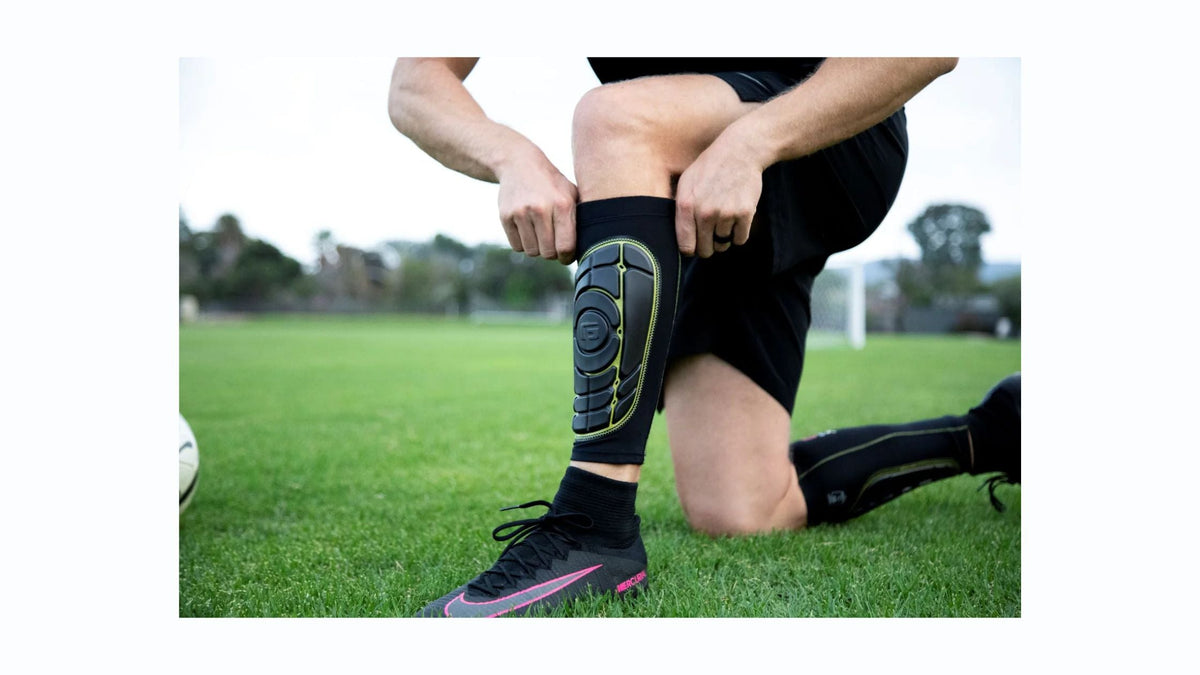
How To Wear Soccer Shin Guards
|
|
Time to read 4 min
|
|
Time to read 4 min
Shin splints and lower leg bruises are some of the most general injuries in youth soccer—but the good news is, they’re totally preventable! That’s why protective gear, like shin guards, is so important. Their primary function is to secure the bones and soft bones in the lower extremities from external impact. Shin guards absorb shock and facilitate energy dissipation, decreasing the risk of serious injuries.
However, incorrectly wearing shin guards can reduce their effectiveness and cause discomfort during play. Knowing how to wear them properly and keep them in good condition can make all the difference on the field. This guide will explore everything you need to know about wearing shin guards properly, from choosing the right size to securing them for optimal protection.
The right fit for shin guards is crucial for comfort and protection. Wearing the wrong size can lead to restricted movement or inadequate coverage. Here’s how to find the right size:
Measure Your Shin Length: Use a measuring tape to determine the distance between 2 inches below your knee and the bend of your ankle. This precise measurement willenable you to select the appropriate shin guard size.
Try Different Fits: Even if you find the right size based on measurements, trying different styles can make a difference. Move around, kick, and test how the shin guards feel.
Check Comfort and Protection: Your shin guards should cover your bones without pressing too tightly. Consider a different style or size if they cause discomfort or restrict movement.
Before wearing shin guards, it’s essential to understand the different types available. Each style offers unique advantages and caters to different player preferences:
These shin guards, which provide added ankle support, are commonly used by youth and intermediate players. They include a cloth stirrup that goes under the foot and a strap that secures around the upper calf.
Shin socks with built-in shin guards are ideal for young children. They are easy to wear and ensure the guards stay in place without additional straps or tape.
Slip-in shin guards, which are lightweight and slide directly into socks, are preferred by professional and advanced players. They provide flexibility and are usually secured with athletic tape or compression sleeves.
Wearing shin guards correctly ensures they stay in place and provide complete protection. Follow these steps to secure your shin guards for the best fit:
Step 1: Position the Shin Guards Correctly
Before putting on your socks, slide the shin guards past your ankle and center them over your shin bone. They should rest about 2 inches below your kneecap.
Pro Tip : Some shin guards are shaped specifically for the left or right leg. Look for labels indicating "L" (left) or "R" (right) to ensure proper placement.
Step 2: Secure the Shin Guards
Depending on the type of shin guards you choose, securing them properly is crucial:
Ankle shin guards: Use the built-in straps to wrap around your calf and fasten them securely.
Slip-in shin guards: Use athletic tape, compression sleeves, or high socks to keep them in place.
Shin socks: Pull them over your shin for a snug fit.
Step 3: Adjust for Comfort
Ensure your shin guards are positioned correctly to cover the shin bone completely. They should not slide around or pinch your leg. Adjust the straps or tape if they feel too tight or loose.
Step 4: Wear Soccer Socks Over the Shin Guards
Soccer socks help keep your shin guards in place and add an extra protection coating. Pull the socks over the shin guards, ensuring they are fully covered.
Step 5: Tape for Extra Security (Optional)
If you play an intense game, consider using athletic tape to secure your shin guards further. Wrap the tape just above and below the guards to prevent movement during play.
Like any other soccer apparel, shin guards need regular maintenance to keep them in top condition. Here’s how to care for them:
Wash Regularly: Clean your shin guards at least once a month using lukewarm water and mild soap. Avoid using harsh chemicals.
Air Dry Thoroughly: Never store wet shin guards in your bag. Allow them to dry completely to stop bacteria buildup and odor.
Use Baking Soda: Sparge a little baking soda on your shin guards to neutralize sweat odors.
Store Properly: To allow airflow and prevent moisture buildup, keep shin guards in a breathable bag instead of a sealed container.
Shin guards are one of the soccer gear that is built to last but wears out over time. Look for these signs to know when it’s time for a replacement:
Cracks or breaks in the plastic that compromise protection.
Loose or damaged straps that no longer secure properly.
Uncomfortable fit due to wear and tear.
If you notice any of these issues, invest in a new pair to make sure maximum protection on the field.
Wearing general shin guards correctly is essential to staying safe on the field. Whether you prefer ankle shin guards, slip-in guards, or shin socks, ensuring a proper fit will maximize protection and comfort. Maintaining and replacing your shin guards when necessary keep your soccer equipment in top shape for every game. Take the time to find the right fit, secure them properly, and care for them well—your shins will thank you!
The Soccer Factory offers top-quality shin guards for comfort, durability, and maximum impact absorption. We have super lightweight and durable shin guards for all levels of play. Browse our soccer store today and find the perfect fit for your game. Stay protected, play confidently, and dominate the field!
Lorem ipsum dolor sit amet, consectetur adipiscing elit, sed do eiusmod tempor incididunt.
